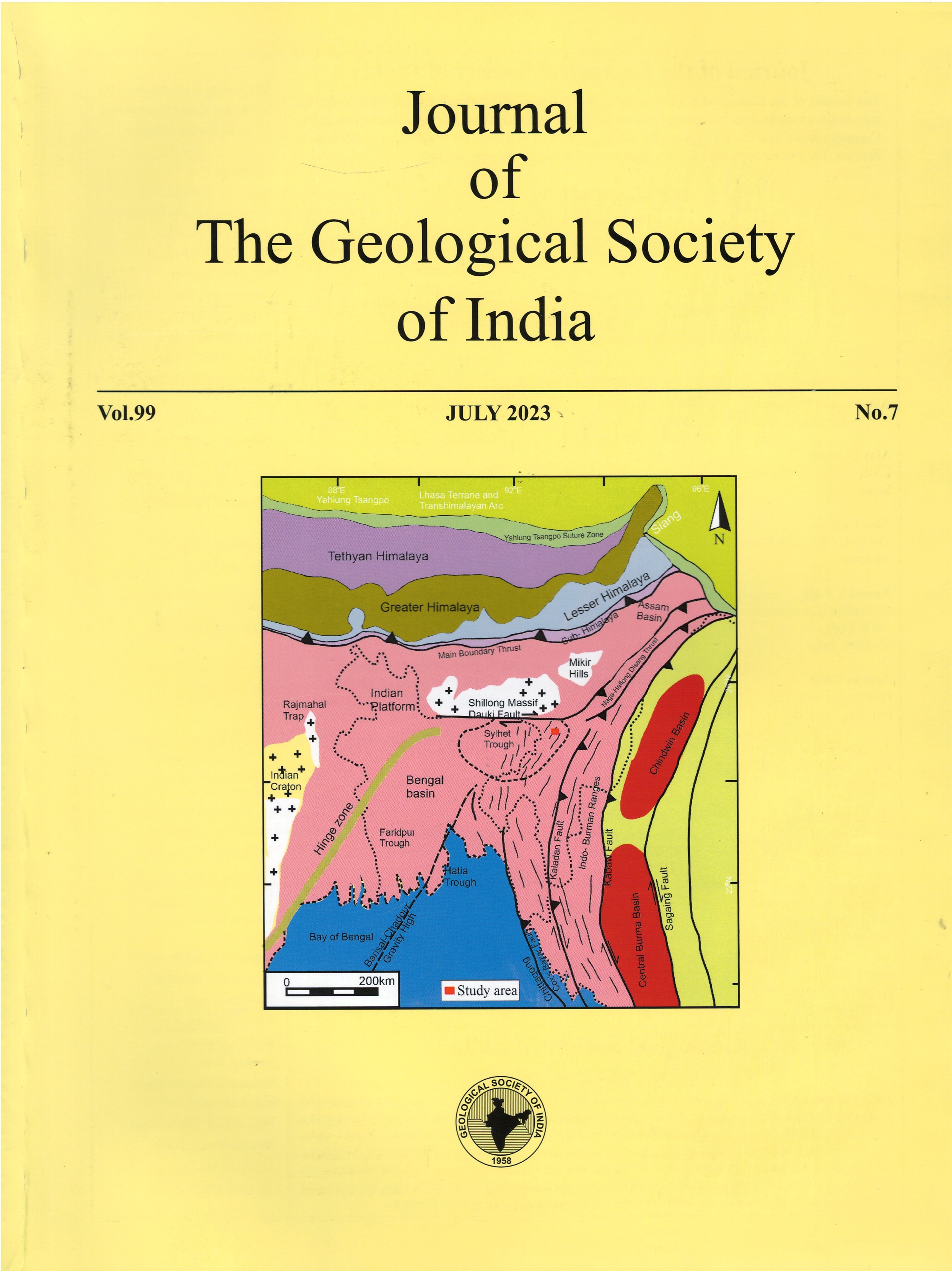Petrography, Diagenesis and Hydrocarbon Source Potential of the Barail and Disang Group of Rocks in Parts of the Naga Schuppen Belt and Inner Fold Belt of Assam-Arakan Basin
DOI:
https://doi.org/10.1007/s12594-023-2412-zKeywords:
No keywords.Abstract
Rock-thin section study, scanning electron microscopy (SEM), X-ray diffraction (XRD), and Rock-Eval pyrolysis have been carried out on the Barail (Oligocene) and Disang (Eocene) groups of rocks of the Naga Schuppen Belt of Assam-Arakan Basin to understand the reservoir properties and hydrocarbon source potential. Analyses show that the Barail Group sandstones are moderately well-sorted, medium-grained, sublithic arenite type, and bear good porosity (avg. 14.48%). In contrast, the Disang Group sandstones are very hard and compact, fine-grained, sublihic arenite, and lithic greywacke types and show medium porosity (avg. 11.3%). The reservoir properties of the sandstones of both groups are controlled by various diagenetic alterations like mechanical compaction, cementation, overgrowth, authigenesis of clay, fracturing, dissolution, and alteration of unstable clastic grains. However, no single diagenetic process could be considered as the main controlling parameter in the evolution of the porosity of the studied sandstones. The Rock-Eval pyrolysis indicates that the carbonaceous shales of both the Barail and Disang groups are characterized by type III and type IV kerogen. A good number of shale samples show TOC (total organic carbon) values ranging from 0.88 to 10.71 wt%, which seems quite good. In most of the samples, S2 is recorded <2 mg HC/g of rock, indicating the potential to generate wet gas. The various binary plots mostly show the gas source potential of shales of both the Barail and Disang groups. Production Index (PI) values vary between 0.04-0.45 for the Barail shales and 0.04-1.0 for the Disang shales, indicating that the studied shale samples are in the last phase of catagenesis.

 Manash Pratim Gogoi
Manash Pratim Gogoi






